#NEw Species
Explore tagged Tumblr posts
Text
Meet the seven new frog species we just named after iconic Star Trek captains!
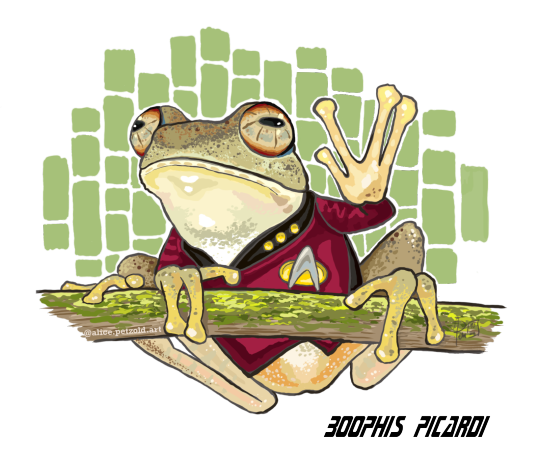
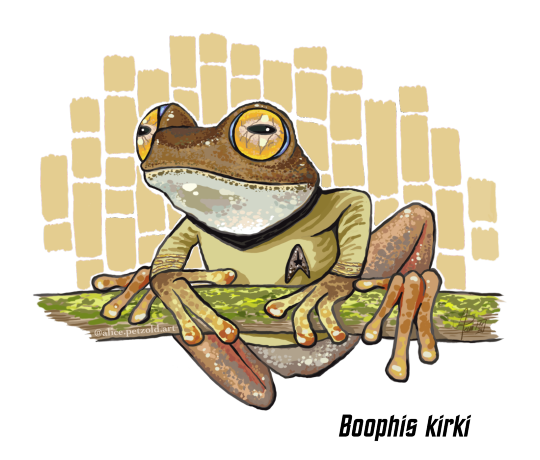
Artwork by A. Petzold, CC BY-ND 4.0
At the right time of year along rushing streams in the humid rainforests that stretch the length of Madagascar's eastern and northern mountain ridges, otherworldly trills of piercing whistles can be heard.
Are they birds? Insects? Communicator beeps? Tricorder noises?
No, they're little treefrogs!
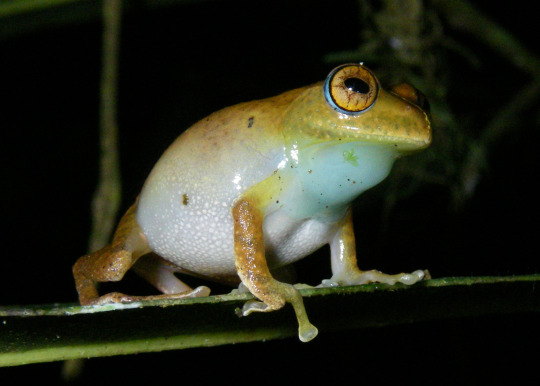
Boophis janewayae. Photo by M. Vences, CC BY-SA 4.0
Until recently, we thought all of the populations of these little brown frogs across the island were one widespread species, Boophis marojezensis, described in 1994. But genetics in the early 2000s and 2010s showed that there were several species here, not just one.
Now my colleagues and I have shown that they are in fact eight separate species, each with unique calls!
These whistling sounds reminded us so much of Star Trek sound effects that we decided to name the seven new species after Star Trek captains: Boophis kirki, B. picardi, B. janewayae, B. siskoi, B. pikei, B. archeri, and B. burnhamae.
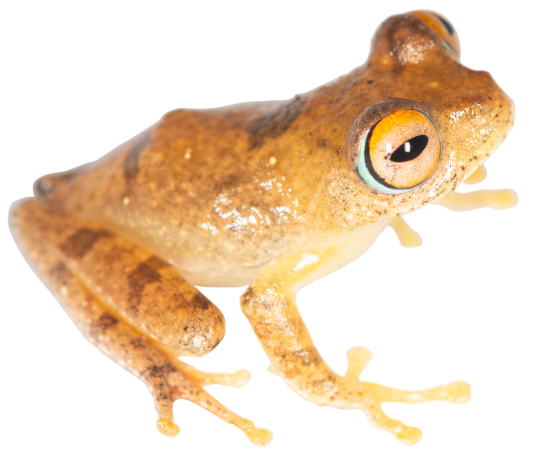



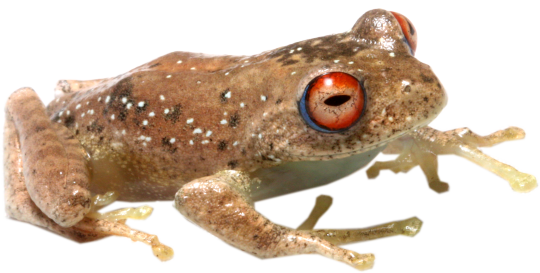


Photos of all new species described by Vences et al. 2024. CC BY-SA 4.0
I subtly and not-so-subtly built some Star Trek references into the paper, but probably the best one is this one:
'Finding these frogs sometimes requires considerable trekking; pursuing strange new calls, to seek out new frogs in new forests; boldly going where no herpetologist has gone before.'
— Vences et al. 2024
There’s a real sense of scientific discovery and exploration here, which we think is in the spirit of Star Trek.
Of course, it doesn't hurt that there are at least two Trekkies amongst the authors (including yours truly). As fans of Star Trek, we are also just pleased to dedicate these new species to the characters who have inspired and entertained us over the decades.
On a personal note, this marks a milestone for me, as it means I have now described over 100 frog species! I am very pleased that the 100th is Captain Janeway's Bright-eyed Frog, Boophis janewayae (if you count them in order of appearance in the paper)—she is probably my favourite captain, and I really love Star Trek: Voyager.
You can read more about the discovery of these new species on my website! You can also read the Open Access paper published in Vertebrate Zoology here.
#news#breaking news#Star Trek#new species#science#animals#WAKE UP BABE NEW FROGS JUST DROPPED#Boophis#Boophis janewayae#Boophis burnhamae#Boophis siskoi#Boophis pikei#Boophis archeri#Boophis kirki#Boophis picardi#in which nerds bring their nerdiness to work#Engage#WERE YOU WATCHING THIS SPACE?#THE FINAL FRONTIER?#DID YOU GET THE REFERENCE‽#Every time I have used that tag it has made me giddy with glee#you thought I was just goofin'#but I was FORESHADOWING#There's frogs in that nebula
8K notes
·
View notes
Text
A podcast? About New Species?
Hi Tumblr, i'm Zoe and I like to interview scientists about the species they find, identify, and describe.
It turns out there are new species of pretty much everything; mammals, lizards, and beetles but also flowers, deep sea worms, starfish, and even short-tailed whip-scorpions. There are so many stories behind these species too, from the ways that they are named (for Willie Nelson Songs, Warhammer 40k characters, and Icelandic presidents) to the places they are found (in remote Brazilian caves, on top of Mount Olympus, and even in their own backyards).
We also go on some fun tangents, including exploring naming conventions, a deep dive into weevils, and some bonus episodes (free on Patreon) where friends of the pod and I review cheesy horror flicks for scientific accuracy.
I want to help scientists share their work because taxonomy is important. Understanding evolutionary relationships is important. Conservation is important. There are a thousand reasons why the work of finding new species matters, and in these episodes, researchers share them all.
So join us! As we explore the biodiversity of our planet with the scientists who help us better understand it. Edited to add: Website: newspeciespodcast.net RSS: https://anchor.fm/s/3a86c1f0/podcast/rss This podcast is on Spotify, Pocketcasts, Google Podcasts, Castbox, and Apple Podcasts.
#deep sea worms#schizomids#starfish#gecko#willie nelson#warhammer 40k#new species#science#biology#environmental science#conservation#podcast#taxonomy#systematics
1K notes
·
View notes
Text
#paleontology#new species#punk ferox#emo vorticaudum#aculifera#mollusc#invertebrate#exceptional preservation#excellent names
686 notes
·
View notes
Text
New species added: American Badgers
These fuzzy buddies are the newest mustelids on the site!
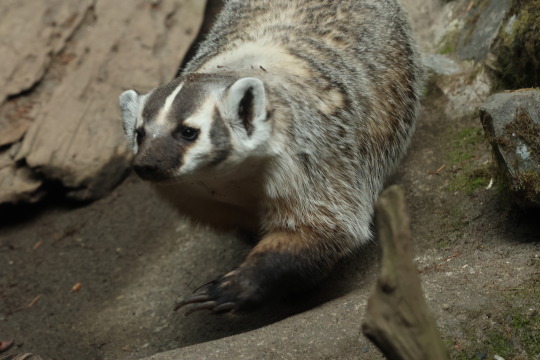
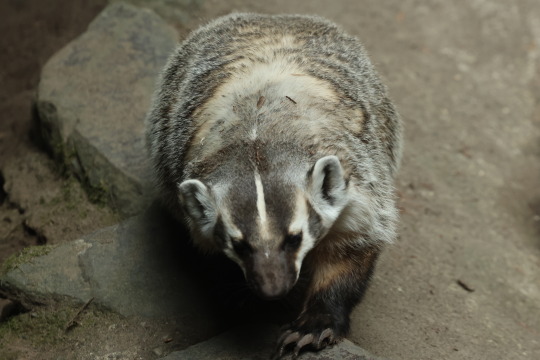
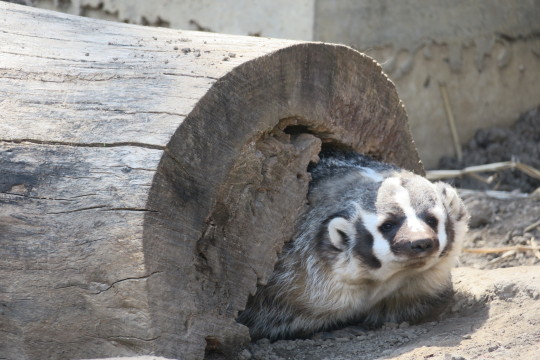

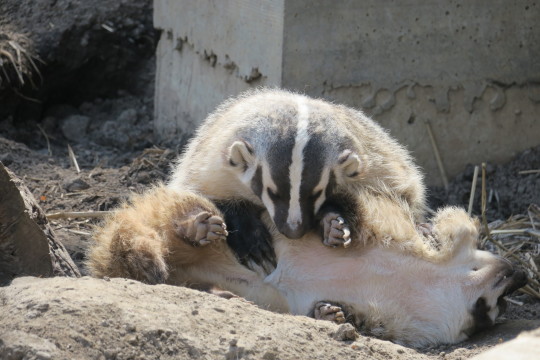



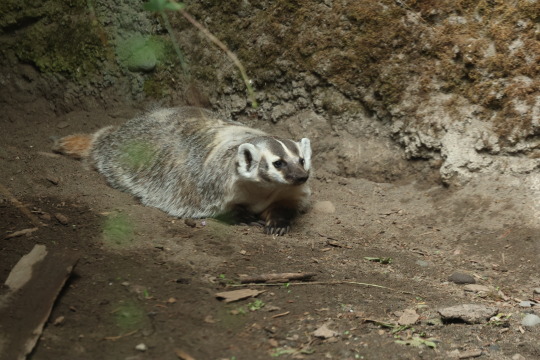
Artists creating derivative or transformative works (without AI) have blanket permission to use all photos in the repository as references, including works that will/may be sold.
The Exotic Animal Photo Reference Repository is permanently open-access and funded entirely by donations, please consider contributing if you can!
** Patreon ** -- *Ko-Fi**
#art references#art resources#animal photography#exotic animal photo reference repository#animal reference photos#art reference#art resource#art inspo#badgers#american badgers#mustelids#new species
823 notes
·
View notes
Text
New Millipede!!! Sphaerobelum turcosa is a newly discovers species of pill millipede that was recently discovered in the Loei province of Thailand. A team of researchers were doing field work in the Phu Pha Lom Forest when they discovered fourteen of these brightly colored millipedes. Due to their stunning coloration these pill millipedes were nicknamed “The Jewel of The Forest”.
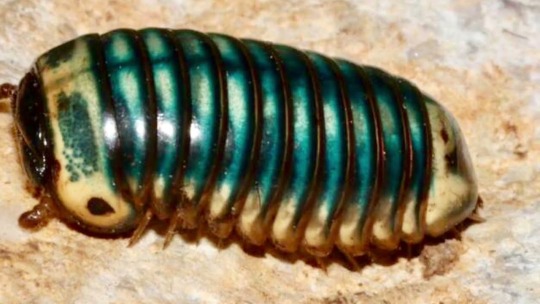
Pill millipedes have convergently evolved a body structure similar to that of isopods (aka roly polies) and have comparatively shorter bodies than other species of millipedes, and like roly polies they will roll themselves into a ball when they feel threatened.
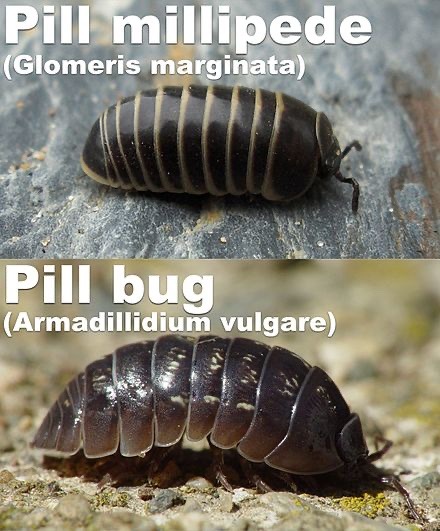
The bright turquoise color of Sphaerobelum turcosa helps warn predators that they are poisonous and not to eat them. This millipede also has tan markings on its exoskeleton that form a mask-like marking that helps to scare off potential predators.
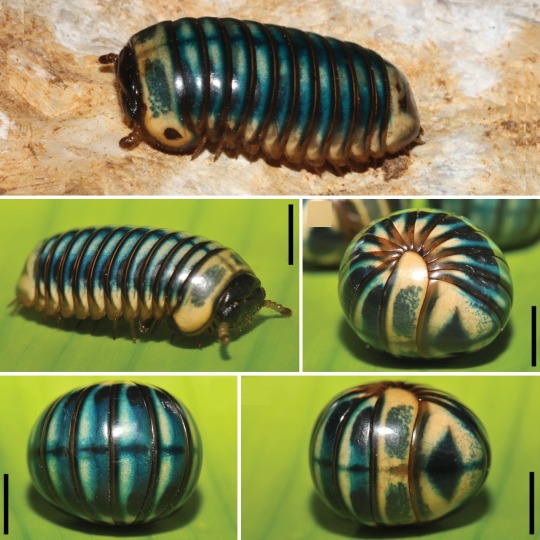
4K notes
·
View notes
Text
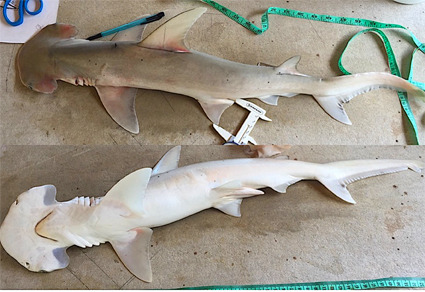
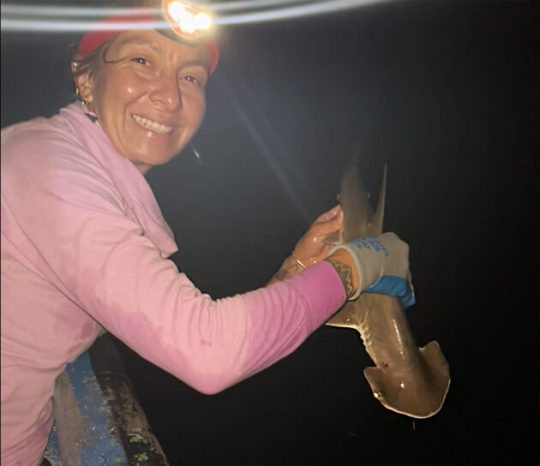
NEW HAMMERHEAD SHARK JUST DROPPED
Not every day does a new shark get discovered! Meet the Shovelbill Shark (Sphyrna alleni), a newly described species of hammerhead shark named after Microsoft co-founder and philanthropist Paul Allen. This new species is found in the coastal waters of the Caribbean and southwest Atlantic.
Hammerhead sharks are easily recognized by their laterally expanded and dorsoventrally compressed heads. Genetic studies have revealed that what was once thought to be a single bonnethead species (Sphyrna tiburo) is actually a complex, with Sphyrna alleni now recognized as a separate species. A longtime advocate for wildlife conservation, Paul Allen and his Paul G. Allen Family Foundation supported Global FinPrint, an international survey of the world’s reef sharks and rays. It was during this project that scientists conducted much of the fieldwork necessary to describe this newly recognized species. The Shovelbill Shark is smaller than the bonnethead, with distinct genetic and morphological characteristics, including a different number of vertebrae, which suggest it is separate from other hammerhead species. This new species is distributed from Belize to Southern Brazil, inhabiting estuaries, coral reefs, sandy and muddy bottom beds, seagrasses, and mangroves.

The Shovelbill Shark is a common component of artisanal fisheries in many Latin American countries and currently lacks proper management or protection. Previous reports indicate that this new species is undergoing overexploitation, making it imperative to safeguard their populations and establish fisheries regulations.
Photographs: Above is a male shovelhead shark (Sphyrna alleni), described from the Caribbean and the Southwest Atlantic. Below is Cindy Gonzalez, the lead researcher of the study, tagging the new species Sphyrna alleni (photo courtesy of the Mays Family Foundation).
Reference: Gonzales et al., 2024. Sphyrna alleni sp. nov., a new hammerhead shark (Carcharhiniformes, Sphyrnidae) from the Caribbean and the Southwest Atlantic. Zootaxa.
654 notes
·
View notes
Text
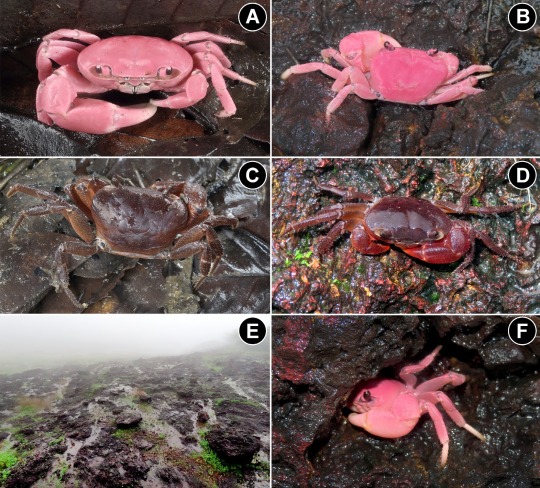
I think tumblr would be into the bright pink freshwater crab that was just discovered
#ghat crab#freshwater crab#new species#crab#crabs#Ghatiana dvirupa#biology#marine biology#not really its#freshwater biology#arthropod#beasts
462 notes
·
View notes
Text




Locked in and made my own elf species
I call them Eltaan, at least for now, I will do some revisions and changes most likely, cuz they were made quite hastily, but I like how they turned out, so I might as well show em
#thought to myself man i sure love elves#wish there were more that didn't look so human though#thaen i realized i can literally make some#so here we are#oc#yall are welcome to make ur own based on these btw i don't mind at all#original characters#original character#elf#elve#elves#new species#eltaan#shadowkin#dark elf#solar elf#i was a bit inspired by dos2 elfs tho#love them so much
83 notes
·
View notes
Text

Thanks to some of tumblr post mentioning those bug species! I retweeted those ones I saw!
Meet these beautiful beetles that exist including the new discovered beetle Excastra albopilosa!
American carrion beetle (Silpha americana), giant stag beetle (Lucanus elaphus), Dynastes grantii and Macrodontia Cervicornis!
I hope you guys like it ^^
#art#pixel art#arthropods#digitalart#pixel#arthropod#pixelart#bugs#insects#insect#beetle art#beetle#beetles#Macrodontia Cervicornis#Excastra albopilosa#new discovery#new species
222 notes
·
View notes
Text

they named the new species of spider what.
#entomology#zoology#insects#arachnids#bugs#spiders#tarantula#araneae#china#new species#trapdoor spider#THIS IS A MOMENT IN HISTORY#TAKE A PICTURE
122 notes
·
View notes
Text
💕Happy Valentine's Day!❤️

My colleagues and I got you a gift: Anilany karsticola, a new species of miniaturised frog from Madagascar! Published Open Access today in the journal Salamandra.
Read more and get the paper here: www.markscherz.com/archives/6117
1K notes
·
View notes
Text
595 notes
·
View notes
Note
you should do the new dinosaur Fona!!
2024 was an amazing year for paleontology with so many newly named species. I'm so glad I got to include this one last new species for the year (I think I drew them in Late November lol so they count for 2024's creations)

I need to update my shop to include them once I have some time ;u;
Stickers || Phone Wallpapers Masterlist
#art#my art#paleoart#paleontology#science#illustration#dinosaur#fona#new dinosaur#new species#ornithopod
89 notes
·
View notes
Text
Hyloscirtus tolkieni
Also known as Tolkien Frog
A new species of frog has been described from the tropical Andes of Ecuador and was named after the well known fantasy author J.R.R. Tolkien.
The scientists who published the first description of the species (Juan C. Sánchez-Nivicela, José M. Falcón-Reibán, and Diego F. Cisneros-Heredia) said that they named the frog after Tolkien because “the amazing colours of the new species evoke the magnificent creatures that seem to only exist in fantasy worlds."




They also paraphrase The Hobbit in the introduction of their paper (see photo 4)
The adult frogs appear to be nocturnal animals
#interesting facts#science#i love science#tolkien#middle earth#the hobbit#the lord of the rings#smaug the dragon#frog#wild animals#animals#new species#halloween#bilbo baggins#thorin x bilbo#biology#interesting#jrr tolkien#fantasy books#books
95 notes
·
View notes
Text
THREE NEW SHARK SPECIES THIS WEEK!
The second week of July 2023 something extraordinarily beautiful happened, the findings of 3 new species of sharks for were announced
A new angel sharks species was identified, from the western Indian Ocean on the Mascarene Plateau and off southwestern India in 100–500 m depths, the Lea’s angel shark Squatina leae, was recognized to be different genetically and morphologically distinct from its congeneric species Squatina africanae, following unique morphological features. This species was first detected in 1988 after finding three unusual, small sharks, but till today was completely understood. The angel shark is named after one of the author’s fiancee’s late sister, Lea-Marie Cordt.
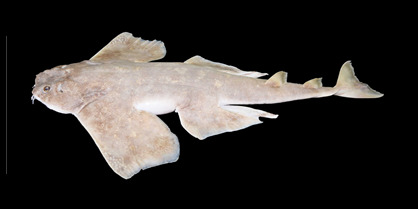
- Squatina leae, adult male, in dorsolateral.
Angel sharks are “flatter sharks”, possesing distinctly broad, dorsoventrally flattened bodies, a short snout with large mouth and nostrils, eyes on top of the head close to the large spiracles, very large pectoral fins, and a lateral caudal keel. They've evolved to be ambush predators, they lie in wait for prey to pass closely overhead before attacking.
Reference (Open Access): Weigmann et al., 2023. Revision of the Western Indian Ocean Angel Sharks, Genus Squatina (Squatiniformes, Squatinidae), with Description of a New Species and Redescription of the African Angel Shark Squatina africana Regan, 1908. Biology
From North Australia, another species of hornshark is described based on six whole specimens and a single egg case. The painted hornshark Heterodontus marshallae was previously considered to be the same with the zebra bullhead shark another well know bullhead shark from the central Indo-Pacific from Japan to Australia, but genetic and morphological analyses indicated the sharks were different, but looking alike. The painted hornshark is endemic to northwestern Australia and occurs in deeper waters, at 125–229 m below surface.
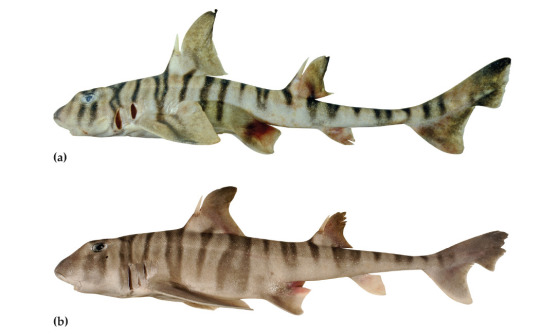
- Lateral view of two mature female painted hornshark Heterodontus marshallae showing small differences between individuals
The painted hornsharks is named in honour of Dr. Lindsay Marshall www.stickfigurefish.com.au a scientific illustrator and elasmobranch scientist who expertly painted all the sharks and rays of the world for the Chondrichthyan Tree of Life Project.
Reference (Open Access): White et al., 2023 Species in Disguise: A New Species of Hornshark from Northern Australia (Heterodontiformes: Heterodontidae). Diversity.
And from an unidentified shark egg collected from the deep waters of northwestern Australia, in 2011 recently helped researchers identify a new species of deep water cat shark. Called ridged-egg catshark Apristurus ovicorrugatus after its eggs, it was collected in the earlys 90 but remained unknown to date. This sharks presents white eyes, and is small in size, reaching less than a half meter in length. .
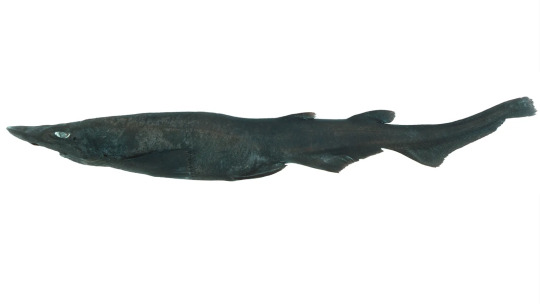
- Lateral view of female Apristurus ovicorrugatus before preserved. Photo by CSIRO.
Egg cases belonging to this species had been documented as early as the 1980s, but could not be matched to any species of Australian shark until recently scientists examined a shark specimen of previously uncertain identity in the CSIRO collection.
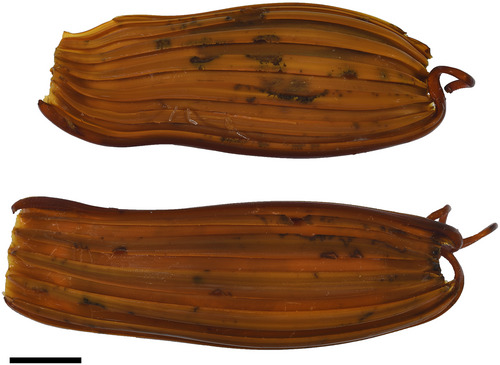
-egg cases of Apristurus ovicorrugatus. Scale bar is 10 mm
Reference (Open Access) White,et al., 2023 What came first, the shark or the egg? Discovery of a new species of deepwater shark by investigation of egg case morphology. Journal of Fish Biology.
#Squatina leae#Squatina#new species#elasmobranch#shark#biology#marine biology#science#marine science#indian ocean#bioblr#sciblr#sci#painted hornshark#Heterodontus marshallae#Heterodontus#Apristurus ovicorrugatus#Apristurus#long post#Ridged-egg catshark#Lea’s angel shark
3K notes
·
View notes
Text
377 notes
·
View notes